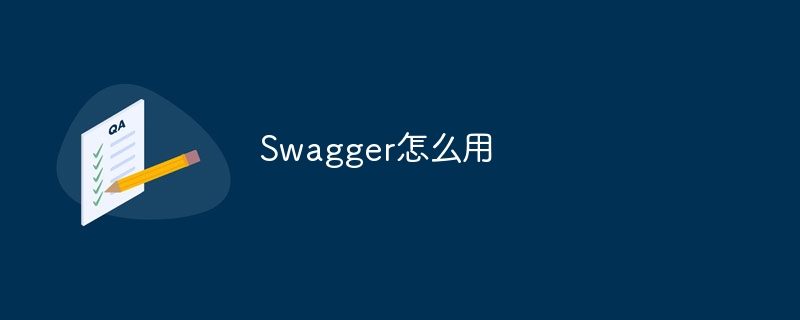Home >Common Problem >How to use Swagger
How to use Swagger
- 百草Original
- 2023-09-26 11:41:011326browse
The basic usage of Swagger is to first install Swagger, write Swagger specification files, add Swagger annotations, configure Swagger, run and access Swagger UI, etc. Detailed introduction: 1. To install Swagger, you need to install Swagger-related tools and libraries; 2. Write the Swagger specification file. Swagger uses the OpenAPI specification to describe and define Web services. The OpenAPI specification is a document in JSON or YAML format, etc.

Swagger is an open source tool for building, documenting, and testing web services. It makes it easier for developers to understand and use Web services by providing a standardized description file and interactive interface. The following will introduce the basic usage of Swagger.
1. Install Swagger
First, you need to install Swagger related tools and libraries. It can be installed in the following ways:
- Using the Swagger Editor officially provided by Swagger, you can use the online editor directly on the https://editor.swagger.io/ website.
- Using Swagger UI officially provided by Swagger, Swagger UI can be integrated into existing web applications.
- Use third-party Swagger tools, such as Swashbuckle (for .NET) or Springfox (for Java), etc.
2. Write Swagger specification file
Swagger uses the OpenAPI specification to describe and define Web services. The OpenAPI specification is a document in JSON or YAML format that contains detailed information about the web service, including interfaces, parameters, return values, etc. Swagger specification files can be written in the following ways:
- Manual writing: You can use a text editor to manually write the OpenAPI specification file, which contains various details of the web service.
- Automatic generation: You can use Swagger annotations or code generation tools to automatically generate OpenAPI specification files. For example, for Java developers, tools such as Springfox or Swagger Core can be used to automatically generate OpenAPI specification files.
3. Add Swagger annotations
If you are using a development framework that supports Swagger annotations (such as Spring Boot, ASP.NET Web API, etc.), you can add Swagger annotations to the code to automatically generate OpenAPI specification document. These annotations can mark controllers, interfaces, parameters, return values, etc. so that Swagger can correctly parse and generate specification files.
4. Configure Swagger
When using Swagger, you also need to perform some configuration in order to integrate and use it with the application. The specific method of configuration depends on the Swagger tool and framework used, but usually includes the following aspects:
-Specify the location and name of the Swagger specification file.
- Configure the access path and style of Swagger UI.
- When configuring the integration of Swagger with an application, such as integrating with Spring Boot, you need to add Swagger-related dependencies and configuration items.
5. Run and access Swagger UI
After completing the above steps, you can run the application and access the Swagger UI interface. Swagger UI provides an interactive interface to view and test various interfaces of web services. In the Swagger UI interface, you can:
- View the interface list and detailed information of the web service.
- View the parameters of the interface, request examples, and response examples.
- Fill in the parameters in the interface and send a request for testing.
- View the response result and response status code of the interface.
Through Swagger UI, developers can more easily understand and use web services, and it can also be provided to other developers for reference and testing.
Summary:
Swagger is an open source tool for building, documenting and testing web services. Using Swagger, you can describe and define the interface, parameters, return values, etc. of a Web service by writing a Swagger specification file or using Swagger annotations. By configuring Swagger and running Swagger UI, developers can view and test each interface of the web service in an interactive interface. The use of Swagger can improve development efficiency, increase code readability and maintainability, and make it easier for other developers to understand and use web services.
The above is the detailed content of How to use Swagger. For more information, please follow other related articles on the PHP Chinese website!
Related articles
See more- Generate files that are not overwritten based on mybatis-plus and support swagger annotations
- How SpringBoot builds API documentation based on Swagger2
- Flask-RESTPlus and Swagger: Best practices for documenting RESTful APIs in Python web applications
- Python server programming: API documentation using django-rest-swagger

